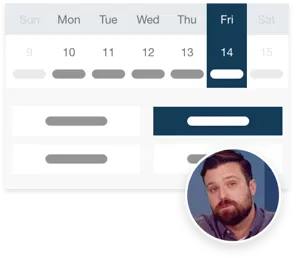One of the fundamental terms you’ll come across in property management finances is gross rent. This blog post will provide a straightforward explanation of what gross rent is, why it matters, and how you can use it in your day-to-day property management operations.
What Is Gross Rent?
In simple terms, gross rent refers to the total income a property generates from its tenants before any expenses or deductions are made. It’s the full amount of rent that you collect from tenants—whether for individual units or the entire building—without taking into account costs such as maintenance fees, property taxes, or management charges.
Gross rent is important because it gives you a clear picture of the total rent income a property generates before any reductions. It’s a “gross” figure, meaning it’s before all the costs are deducted.
Gross Rent vs. Other Rental Metrics
As you dive deeper into property management, you’ll encounter several terms related to rental income. It’s important to understand how gross rent compares to other rental metrics:
- Net Rent: This is the amount of rent collected after deductions (such as maintenance, taxes, and property management fees) are subtracted from gross rent.
- Effective Rent: This is the actual rent a tenant is paying, often adjusted for discounts, incentives, or concessions offered during lease negotiations.
- Gross Potential Rent: This is the amount of rent that could be collected if all units are fully occupied at the listed rental rate, without considering vacancies.
By understanding these different metrics, property managers can assess a property’s financial health from multiple angles.
Why Is Gross Rent Important for Property Managers?
Gross rent is a crucial figure for property managers because it provides a baseline for understanding how much income a property is generating. It helps you:
- Assess the property’s income potential: Gross rent is the starting point when determining how much money the property is capable of bringing in, which helps when budgeting or planning for property improvements.
- Monitor financial performance: Regularly tracking gross rent gives you insights into the property’s financial health. If your gross rent starts to decline, it may be a signal to investigate why (e.g., increased vacancies or declining rent prices).
- Set rent prices: Understanding your property’s gross rent helps you compare against market conditions and determine if rent prices are on track with local trends.
How is Gross Rent Calculated?
Calculating gross rent is simple. Here’s a basic formula you can use:
Gross Rent = Number of Units × Rent per Unit
For example, let’s say you manage a building with 10 rental units, each with a rent of $1,000 per month. To calculate gross rent:
Gross Rent = 10 units × $1,000 = $10,000 per month
This means the total gross rent for that building is $10,000 per month.
Factors That Can Affect Gross Rent
Gross rent provides a helpful overview of a property’s income, but there are several factors can impact the total amount of rent you collect:
- Vacancy Rates: If units are vacant, they don’t contribute to gross rent. A higher vacancy rate can lower the total income.
- Rent Fluctuations: Changes in rental prices, lease renewals, or rent adjustments can affect gross rent. Rent increases can boost your gross rent, while decreases may reduce it.
- Lease Terms: The length and terms of leases can also impact gross rent. Long-term leases offer stability, while short-term leases might bring in higher rents but with potential for vacancies between tenants.
Understanding these factors will help you make informed decisions about rent pricing and occupancy strategies.
Practical Example
Let’s walk through a quick example to visualize how gross rent works in action:
Imagine a property with 10 units, and each unit has a monthly rent of $1,000. If all units are occupied, the gross rent calculation would be:
Gross Rent = 10 units × $1,000 = $10,000 per month
If the building experiences some vacancies, say 2 units are empty, you would adjust your gross rent calculation as follows:
Gross Rent = 8 units × $1,000 = $8,000 per month
This example demonstrates how gross rent can vary based on occupancy levels.
Frequently Asked Questions
What is gross rent?
Gross rent is the total rental income generated from a property before any deductions. It is calculated by multiplying the number of rental units by the rent per unit.
How can vacancy rates affect gross rent?
Vacancy rates directly impact gross rent because vacant units do not contribute to the total rental income. Higher vacancy rates lower the gross rent, while lower vacancy rates increase it.
Why is it important to track gross rent?
Tracking gross rent is essential for property managers to understand their property’s income potential, plan finances, and make informed decisions regarding rent pricing and occupancy strategies.
How do rent fluctuations impact gross rent?
Rent fluctuations, such as increases or decreases in rental prices, lease renewals, or rent adjustments, can impact gross rent. An increase in rent will boost gross rent, while a decrease will reduce it.
What role do lease terms play in gross rent calculation?
Lease terms, including the length and conditions of leases, can impact gross rent. Long-term leases provide stability and consistent income, whereas short-term leases may offer higher rents but come with the risk of increased vacancies.
Can gross rent vary month to month?
Yes, gross rent can vary month to month based on factors like vacancy rates, rent fluctuations, and lease terms. Changes in occupancy or rent prices during any given month can affect the total gross rent collected.
Read more on